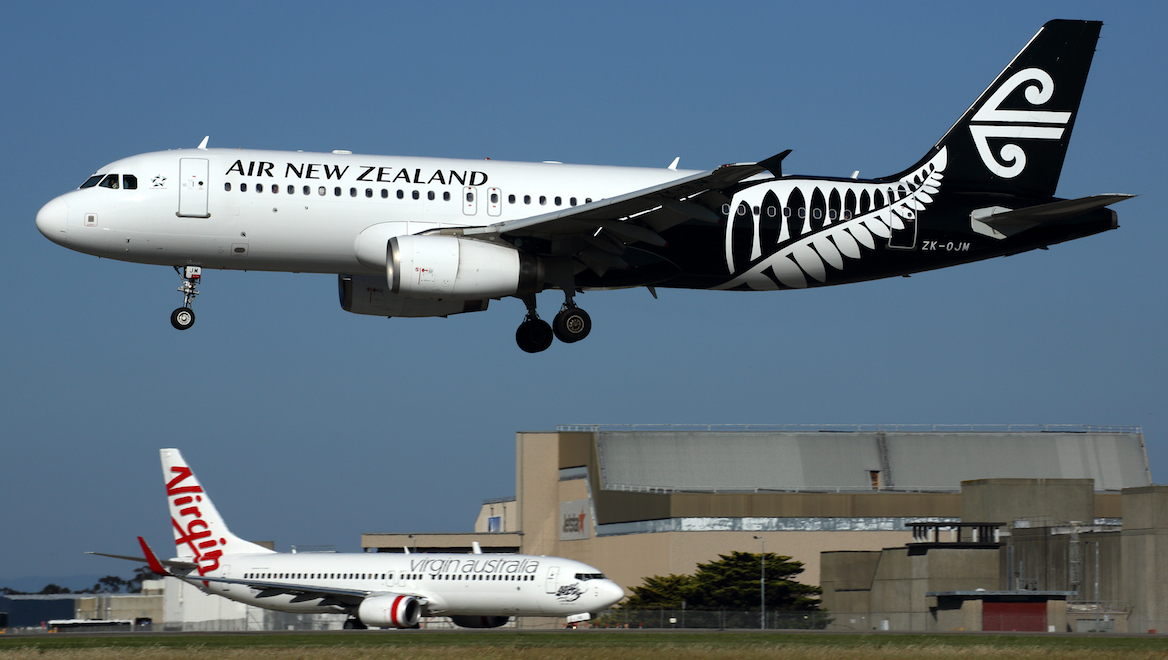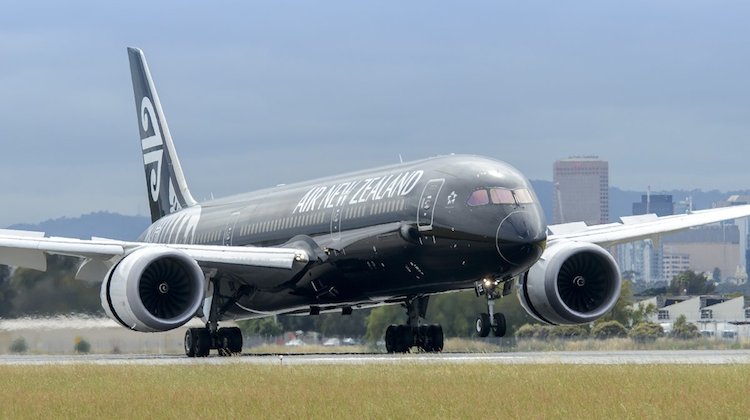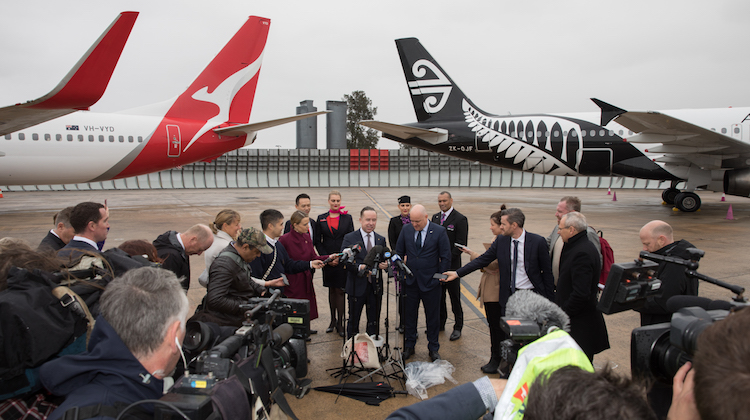
Air New Zealand chief strategy, network and alliances officer Nick Judd says there were signs of a “conscious uncoupling” with Virgin Australia as far back as 2015.
In April, the New Zealand flag carrier announced it would not seek to renew the joint-venture partnership that had been in place since 2010 and was due to expire in October 2018.
Instead, Air New Zealand said it planned to go it alone on the Tasman as part of efforts to deliver a more consistent customer experience with its own aircraft.
Expanding on this at Air New Zealand’s investor day presentations in Auckland on Thursday, Judd said there had been “conscious customer experience decisions on both sides” that put the two carriers on different paths.
“If you look at the Virgin alliance actually, when you look back over the last few years, what you see is that from about 2015 onwards there was quite a conscious uncoupling of the customer journey,” Judd said.
“And as opposed to all of our other alliance relationships you can actually see both organisations diverging and putting in their own separate customer experience.
“We started selling a Virgin only product, rather than a Seats to Suit product, on them because of the number of customer complaints that we got and that was a really conscious decision to sell a different customer proposition.
“There was actually a really clear steer on the way the customer journey was going and that was quite important in the overall review of whether we went forward or not.
“And also they changed ground handlers to Aerocare from us as well which we knew was going to impact the customer experience.”
Established in 2010 after securing the approval of regulators, the Air New Zealand-Virgin Australia alliance involved a metal-neutral, revenue-sharing joint-venture on trans-Tasman routes, as well as reciprocal frequent flyer benefits such as lounge access and priority handling.
Alliance “worked as well as it could be”: Luxon
Despite this, Air New Zealand a year ago reaffirmed its commitment to the alliance, when chief executive Christopher Luxon said at the airline’s investor day briefing on May 31 2017 the “relationship with Virgin is very strong” and that he wanted to “continue that relationship with them going forward”.
Asked at Air New Zealand’s 2018 investor day what had changed since making those statements, Luxon began by saying that the relationship with Virgin Australia that was established in 2010 “worked as well as it could be for the challenges and the environment that we were in at that point in time” before returning to the customer experience theme.
“We’ve always had a series of ongoing issues around customer alignment so if you were sitting in Christchurch and Wellington and the quality of the service and the comparability of the services from the customer experience point of view, we see that very clearly in the customer interactions that we have,” Luxon said.
Luxon, who has been Air New Zealand chief executive since 2013, also cited the changing market dynamics in the trans-Tasman market with the withdrawal of Emirates’ Airbus A380 services between Auckland and Brisbane, Melbourne and Sydney.
Further, he said there was a greater awareness of Air New Zealand in Australia now as it sought to attract Australians heading to North and South America to fly via Auckland.
“We have built a very strong business and a brand sense but also now in an arms and legs and capability sense, distribution sense as well there,” Luxon said.
“The bigger issue was actually the tension that starts to happen when we want to drive a Australia through New Zealand to North and South America strategy.
“So when you want to go put a widebodied aircraft into Adelaide, that doesn’t make a tremendous amount of sense from a trans-Tasman alliance point of view where you are trying optimise the trans-Tasman in a capacity, pricing, scheduling sense.
“It puts at conflict a lot of what a domestic carrier in Australia is trying to do, trying to build its own services to America through direct flying to America.
“So it just made sense for us to sit there and say look now is the time to be able to do it.”

Air New Zealand goes from Virgin Australia to Qantas
Less than two months after saying it would end the alliance with Virgin Australia, Air New Zealand signed a codeshare deal with Qantas for ongoing access to Australian domestic destinations.
There will be no codesharing or coordination on trans-Tasman services and the arrangement does not require regulator approval on either side of the Tasman.
“There’s no better partner for us than Qantas,” Luxon told reporters standing next to Qantas chief executive Alan Joyce in Sydney on the day the codeshare was announced on June 1.

Back at the investor day, Luxon said the codeshare had been “misrepresented in the media quite a bit”.
Virgin Australia described the codeshare agreement as “bad news for consumers”, with its group executive for airlines Rob Sharp telling reporters recently the airline was assessing what role regulators could have in scrutinising the deal.
“We are having a look at it but nothing to comment on specifically except that domestic New Zealand you’ve effectively got the two main players there coordinating in the domestic market which surprises us,” Sharp said on the sidelines of a CAPA – Centre for Aviation conference in Sydney on June 6.
Air New Zealand’s Judd expressed confidence the airline would retain the majority share of the sales it had as part of the trans-Tasman alliance with Virgin Australia once the tie-up ended.
“Our share of sales in that alliance far outweighed the ASK [available seat kilometres] share that we had and we have strength now at both ends, at both point of sales across the Tasman,” Judd said.

















Chris
says:Qantas is the only other major Australian domestic carrier, so Air NZ had to co-share with Qantas for Australian domestic destinations.
With regards to Qantas – New Zealand destinations, Qantas preferred New Zealand domestic operator will still be Jetstar NZ, so Qantas will use Air NZ where Jetstar NZ dosen’t fly too within New Zealand, plus Qantas FF will have access to Air NZ regional lounges.
Chris
says:Air New Zealand made the right decision for this. The product on virgin is still budget. No point having streaming apps for tablets and phones if u don’t have charge points for it
Scott
says:Yeah right a carrier that offers Business class on narrowbodies and very soon wifi = budget. Let’s get factual and leave the baggage behind.
Ian
says:The Virgin frequent flyer program is far superior to Qantas’s especially on flights to USA.
only 89 ff pts & $197 to go Sydney to Vegas & back. Qantas want more points & about $500. What a rip off.
Vannus
says:Line 2, Paragraph 7 in this article says it all………
Craigy
says:@ Ian,
That’s interesting. I looked at the Virgin Velocity redemption tables and funny enough they look a lot like the number of points required by Qantas. Furthermore the rules say you also pay taxes,fees and surcharges. Can you provide evidence of only 89 points and $197 return?
k lane
says:Air NZ absolutely the right decision – Virgin is a ‘cluster-F’ mixed fleet, no strategy in long-haul, limited alliances, poor execution at executive level, marginally proftable
Baxter
says:Just becauase a airline offers business class doesn’t make them full service in economy. Air Asia and jet star for example